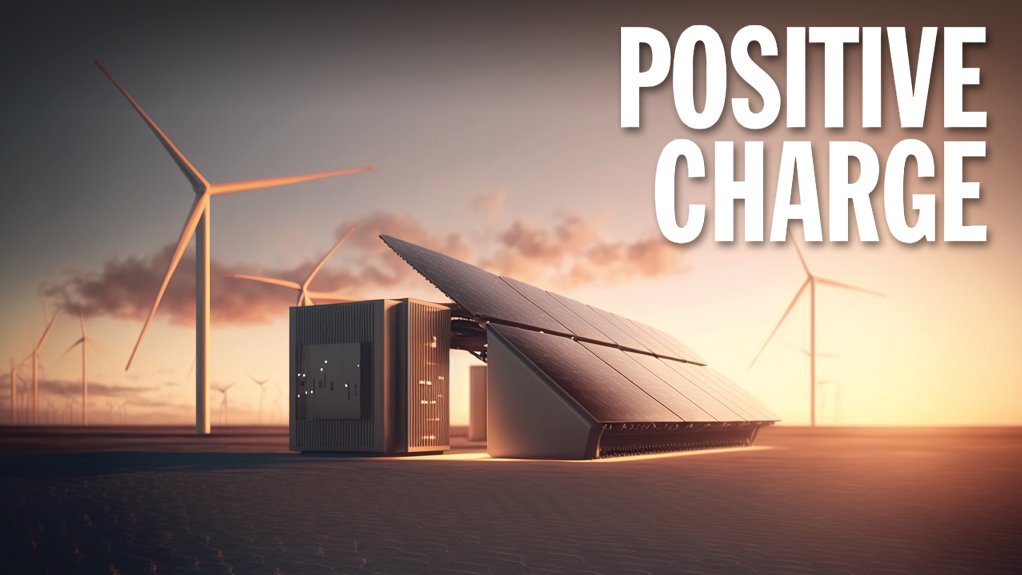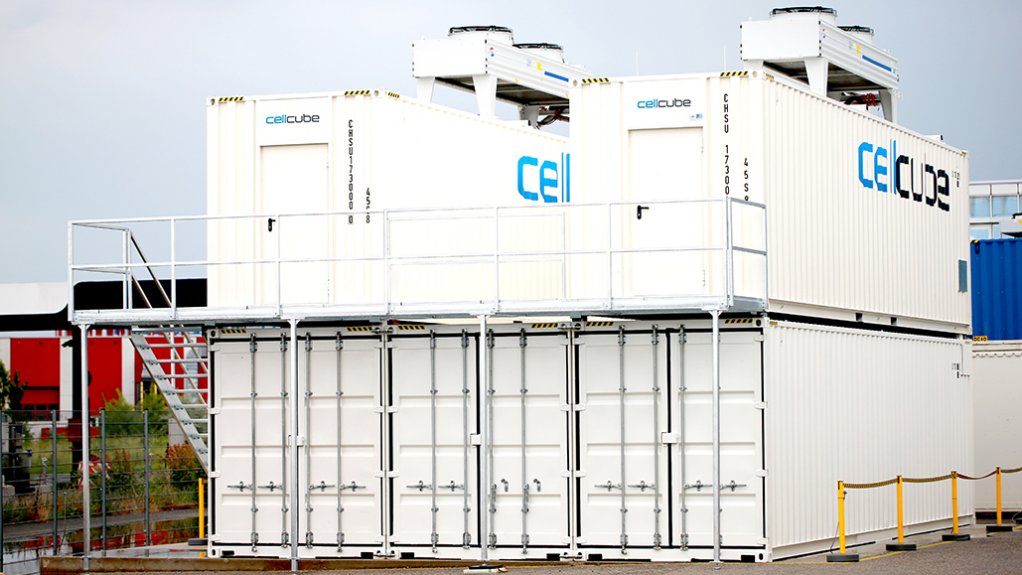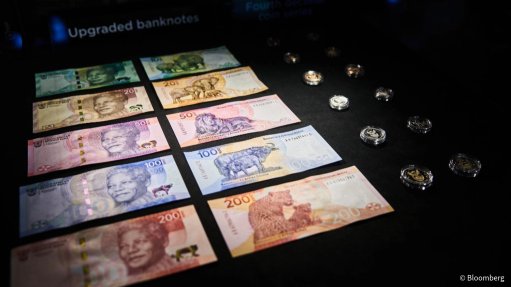How battery storage can help SA navigate its grid and loadshedding challenges






LOCAL CONTENT South Africa is one of the world’s largest primary producers of vanadium, and vanadium redox flow batteries are uniquely suited to large, grid-scale, hardworking and long-duration BESS
FRANK SPENCER BESS can provide various ancillary services, such as voltage regulation, frequency regulation and inertia
MONIQUE LE ROUX Coupling renewable-energy generation with BESS can reduce the short-term power variations at the point of grid interconnection
PROFESSOR SAMPSON MAMPHWELI Small-scale embedded generation, coupled with BESS that dispatches when the system is constrained, can be incentivised through lower electricity tariffs
Amid the current energy crisis, declared to be a state of disaster during last month’s State of the Nation Address by President Cyril Ramaphosa, battery energy storage systems (BESS) could potentially provide some near-term relief in areas of grid constraint, while also allowing households some protection against loadshedding.
The ‘Understanding Energy Storage’ handbook – released last year by the African Legal Support Facility in partnership with the Commercial Law Development Program and Power Africa – outlines the implications of implementing BESS as an alternative to traditional power solutions.
It notes that “energy storage is a powerful tool that can change the pathways to power that sector decision-makers can pursue”.
As a contributor to the handbook, energy storage solutions provider Bushveld Energy deployment head Frank Spencer explains that BESS can provide various ancillary services, such as voltage and frequency regulation, as well as inertia.
BESS can also ease grid constraints by storing electricity produced during the day when demand is low, consequently allowing for electricity to be dispatched later when the system is constrained.
The World Bank Group’s flagship report – titled ‘South Africa and Southern Africa: Battery Market and Value Chain Assessment Report’, published last month – notes that renewable-energy systems need to be supported with energy storage systems to balance large quantities of renewable energy, serving as further motivation for South Africa to release its first grid-scale energy storage tenders as soon as possible.
The report, written by consultancy Customized Energy Solutions, notes that State-owned power utility Eskom launched a tender for over 800 MWh of grid-scale batteries in 2021 to be distributed in South Africa, with the World Bank Group expecting lithium-ion batteries with 20% local content to be deployed under this tender.
The first phase of Eskom’s BESS procurement has been awarded, with a second phase to follow this year.
Eskom is also in the final stages of its own BESS programme that involves commissioning of the first seven utility-scale grid-connected BESS systems, planned for this year. The systems, with a combined capacity of 200 MW, will be installed in grid-constrained areas.
Meanwhile, the Department of Mineral Resources and Energy, through the Independent Power Producer Office (IPPO), is issuing a request for proposals to procure 513 MW of BESS.
The IPPO tender for 513 MW is expected to be awarded during the first quarter of this year, with indications from the IPPO that this may be increased to 1 700 MW.
Moreover, considering that the current transmission grid is unable to support large- scale renewable-energy development, BESS could be used as a mitigation measure to unlock grid capacity.
Implementing BESS in grid-constrained areas, such as the Northern, Eastern and Western Cape, would “make a lot of sense”, owing to their significant wind and solar resources, says Council for Scientific and Industrial Research senior researcher Monique le Roux.
She explains that Eskom’s latest Transmission Development Plan (TDP 2023-2032) assumes that 6.6 GW of BESS will be added to the grid by 2032, coupled with 45 GW of renewable energy.
BESS would, therefore, be used to address the variability of wind and solar as more conventional generation – predominantly coal-fired power stations – is decommissioned, she adds.
During peak generation periods, when all committed renewable-energy generators are generating at peak output, the transmission lines in these grid-constrained areas reach their carrying capacity.
“By making use of BESS, additional generation could be connected in these grid-constrained areas, charged during peak generation periods and discharged during low generation periods. The biggest concern would be the cost of the batteries and how this will influence electricity prices when BESS is used at a larger scale,” says Le Roux.
At utility-scale level, BESS ensures a more reliable power supply when used with renewable-energy generation, transmission congestion relief and upgrade referral.
Le Roux adds that coupling renewable- energy generation with BESS can reduce the short-term power variations at the point of grid interconnection, thereby facilitating better integration of variable renewable energy.
“BESS can smoothen the output of renewable-energy sources and control the ramp rate to eliminate rapid voltage and power fluctuations in the grid,” she assures.
On a micro-level, meanwhile, BESS enables users to be shielded from loadshedding and to eventually recoup the costs of the systems in their utility bill.
Hence, implementing backup inverters with BESS enables households and businesses to mitigate the impacts of loadshedding, with batteries being charged using grid power or solar photovoltaic (PV) power.
Implementation and Incentives
Despite South Africa having various plans in place to procure BESS, the Understanding Battery Energy Storage handbook describes the procurement process as “complex”, noting that all stakeholders are required to be part of the decision-making and oversight of energy storage procurement.
Spencer says the IPPO tender should, therefore, specify where BESS should be built according to Eskom’s requirements.
He adds that optimising the stacking of all value propositions that BESS can provide to extract maximum value is key for effective procurement.
For example, a commercial client could use a battery to increase solar PV penetration, provide tariff arbitrage, improve power quality and aid loadshedding resilience.
Moreover, Spencer cautions that the local regulatory environment is not yet fully conducive to BESS, owing to BESS being treated as generation, and highlights that cost-reflective tariffs are essential to unlock the value proposition of storage.
“South Africa should be promoting technologies that companies can manufacture locally while remaining competitive.
“Vanadium redox flow batteries (VRFBs) are an example of such a technology. South Africa is one of the world’s largest primary producers of vanadium, and VRFBs are uniquely suited to large, grid-scale, hardworking and long-duration BESS,” argues Spencer, who is employed by a company involved with such batteries.
However, large-scale BESS and its implementation require that there be regulations and policies in place.
Therefore, Le Roux notes that the release of an updated Integrated Resource Plan (IRP) is critical to ensure that a clear plan exists for South Africa regarding which generation and storage – and the amount thereof – need to be planned for and procured to ensure reliable and stable electricity supply.
An updated IRP should also indicate how much BESS is required on the system, should this be the least costly option.
Further, considering that the high cost of batteries and inverters has hindered households from installing home solar systems, she comments that government and local municipalities should offer a subsidy or rebate as an incentive.
Le Roux cites Cape Town as an example whereby the municipality has allowed for the buying back of excess electricity from commercial users for an approved tariff of 78.98c/kWh, with an additional 25c/kWh as an incentive.
Moreover, head of the Department of Science and Innovation’s Energy Secretariat at the South African National Energy Development Institute Professor Sampson Mamphweli adds that this kind of small-scale embedded generation – coupled with BESS that dispatches when the system is constrained – can also be incentivised through lower electricity tariffs when households and businesses use electricity from the grid during off-peak periods.
“This way, households and businesses can reduce the payback period for BESS installed on their premises. South Africa can benefit from being cushioned against loadshedding and government does not have to purchase large battery storage systems,” he explains.
Mamphweli adds that, while countries such as the US are integrating BESS at megawatt scale into their grids, these systems require the inclusion of machines, such as synchronous condensers, to stabilise the grid.
Therefore, a study should be conducted to establish the impact of such systems on the local grid before they are introduced.
“Small-scale embedded generation works better for a local context because the impact on the grid becomes more distributed,” adds Mamphweli.
Supply and Demand
In light of local grid constraints and the benefits of implementing BESS, there has been an uptick in demand from the residential and commercial sectors.
Spencer notes that the residential segment has ramped up demand in the past year, to about 2 GWh/y, while the commercial segment has been driven by higher stages of loadshedding and a desire to replace diesel generators.
Meanwhile, Mamphweli adds that most of the household demand for BESS is kilowatt- scale, while demand for BESS at commercial level is at megawatt-scale, primarily in the form of lithium-ion batteries.
However, the subsequent increase in demand for small-scale embedded generation, as a result of loadshedding, has led to more people opting for solutions that supplement their grid connections, thereby creating a supply shortage; a situation that has been further exacerbated by the energy disruptions associated with Russia’s invasion of Ukraine and some lingering supply chain disruptions linked to the Covid-19 pandemic.
“Shipment of small lithium-ion BESS is in huge demand, which has resulted in higher costs of shipping, thereby affecting the cost of BESS. Most European countries are paying premium for their shipment to be prioritised, so it is becoming difficult to secure shipment dates for countries such as South Africa, especially from China,” Mamphweli highlights.
Article Enquiry
Email Article
Save Article
Feedback
To advertise email advertising@creamermedia.co.za or click here
Comments
Press Office
Announcements
What's On
Subscribe to improve your user experience...
Option 1 (equivalent of R125 a month):
Receive a weekly copy of Creamer Media's Engineering News & Mining Weekly magazine
(print copy for those in South Africa and e-magazine for those outside of South Africa)
Receive daily email newsletters
Access to full search results
Access archive of magazine back copies
Access to Projects in Progress
Access to ONE Research Report of your choice in PDF format
Option 2 (equivalent of R375 a month):
All benefits from Option 1
PLUS
Access to Creamer Media's Research Channel Africa for ALL Research Reports, in PDF format, on various industrial and mining sectors
including Electricity; Water; Energy Transition; Hydrogen; Roads, Rail and Ports; Coal; Gold; Platinum; Battery Metals; etc.
Already a subscriber?
Forgotten your password?
Receive weekly copy of Creamer Media's Engineering News & Mining Weekly magazine (print copy for those in South Africa and e-magazine for those outside of South Africa)
➕
Recieve daily email newsletters
➕
Access to full search results
➕
Access archive of magazine back copies
➕
Access to Projects in Progress
➕
Access to ONE Research Report of your choice in PDF format
RESEARCH CHANNEL AFRICA
R4500 (equivalent of R375 a month)
SUBSCRIBEAll benefits from Option 1
➕
Access to Creamer Media's Research Channel Africa for ALL Research Reports on various industrial and mining sectors, in PDF format, including on:
Electricity
➕
Water
➕
Energy Transition
➕
Hydrogen
➕
Roads, Rail and Ports
➕
Coal
➕
Gold
➕
Platinum
➕
Battery Metals
➕
etc.
Receive all benefits from Option 1 or Option 2 delivered to numerous people at your company
➕
Multiple User names and Passwords for simultaneous log-ins
➕
Intranet integration access to all in your organisation























